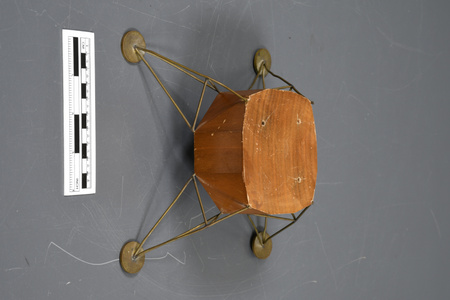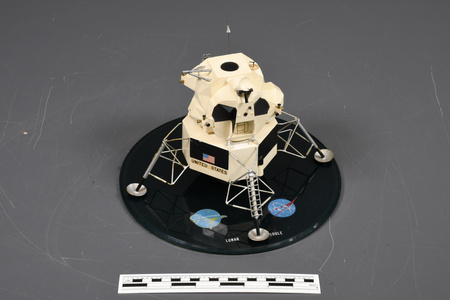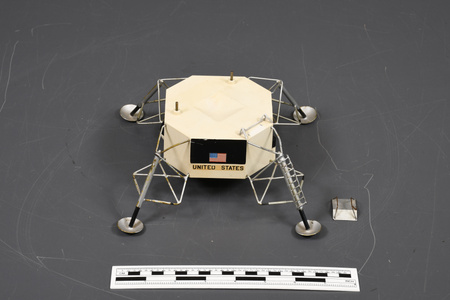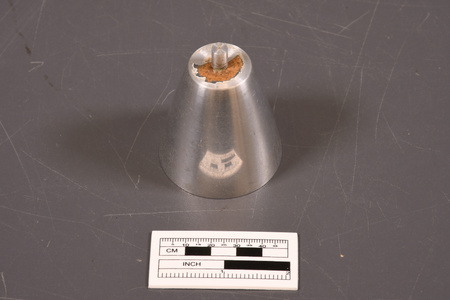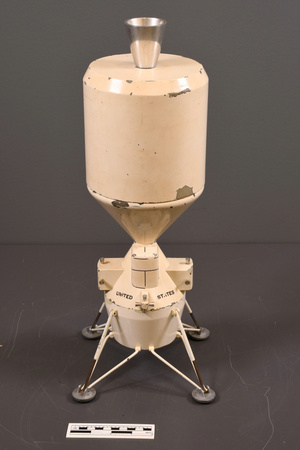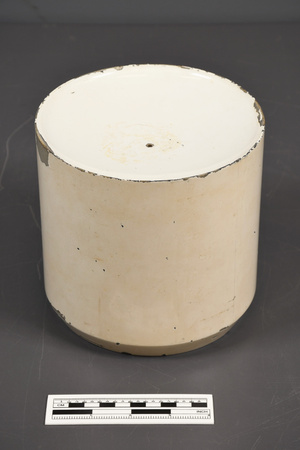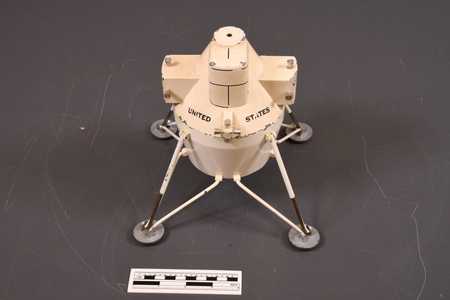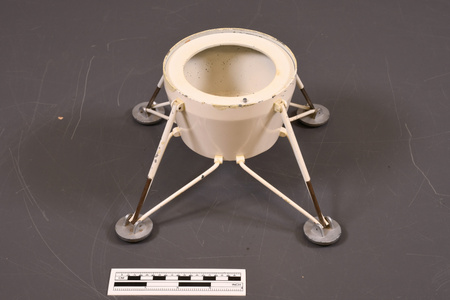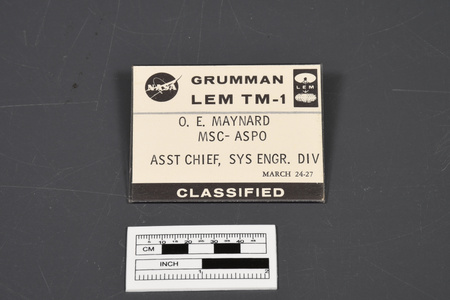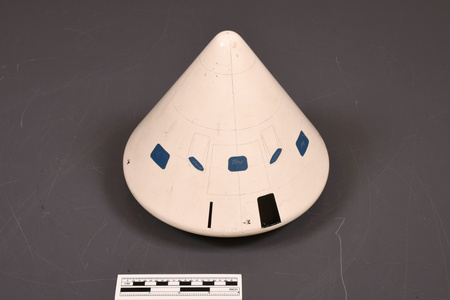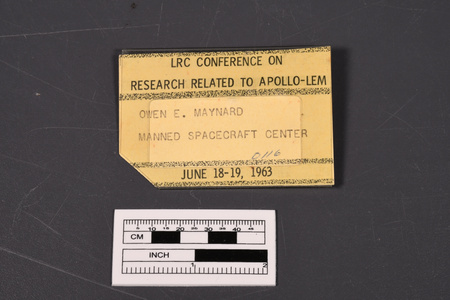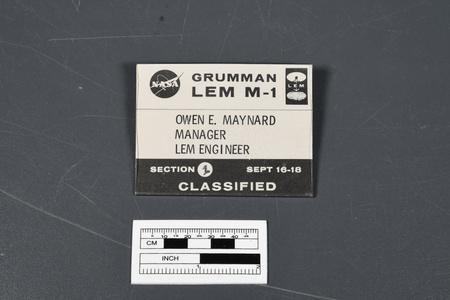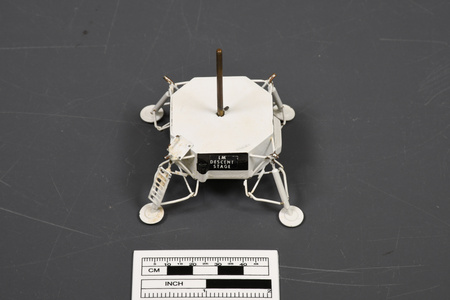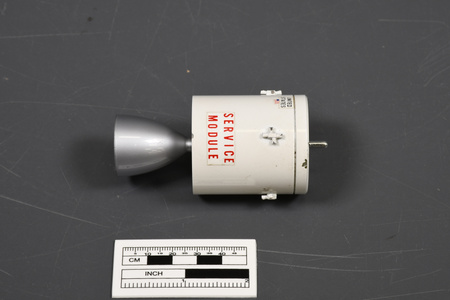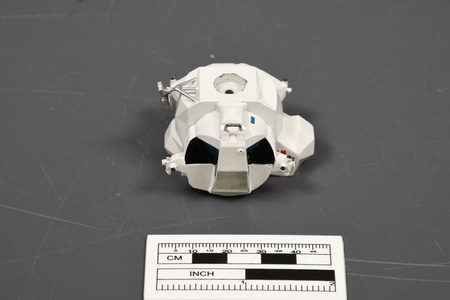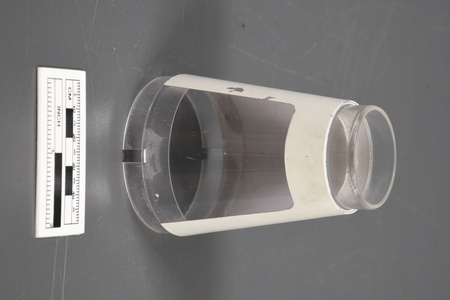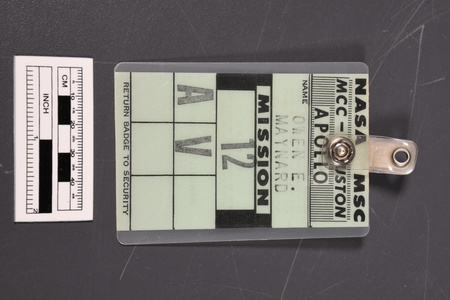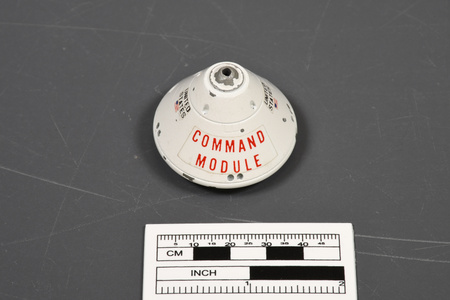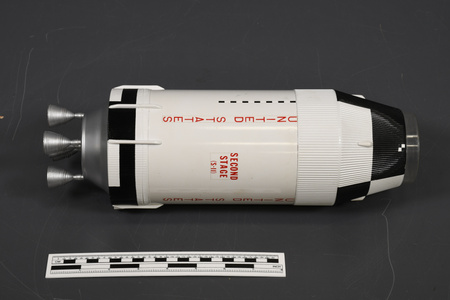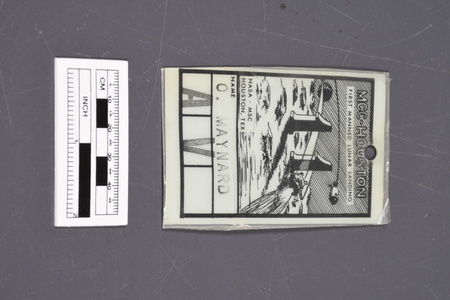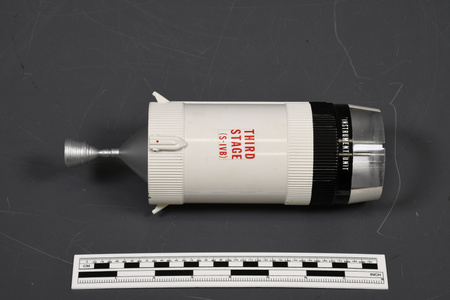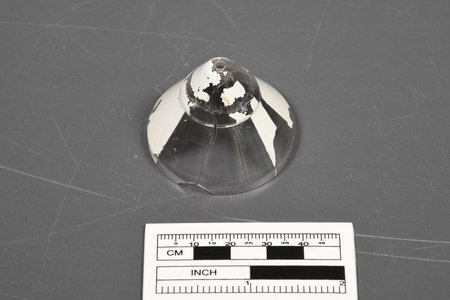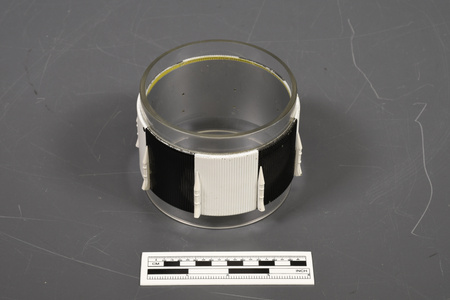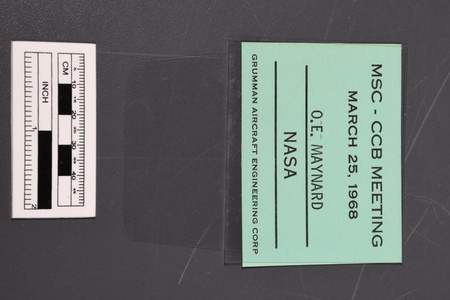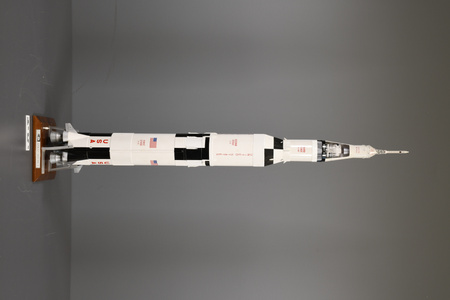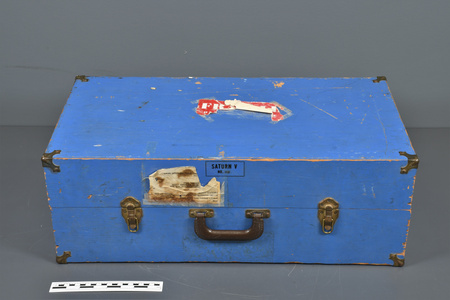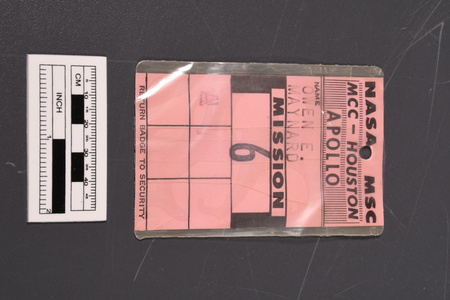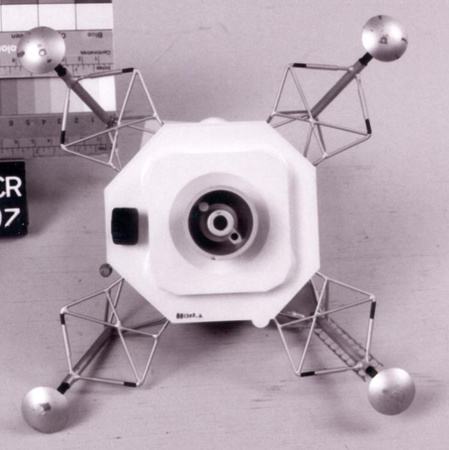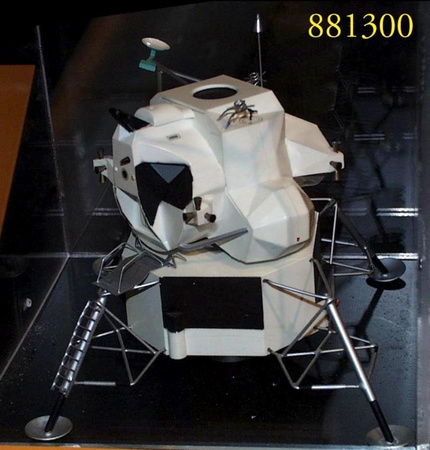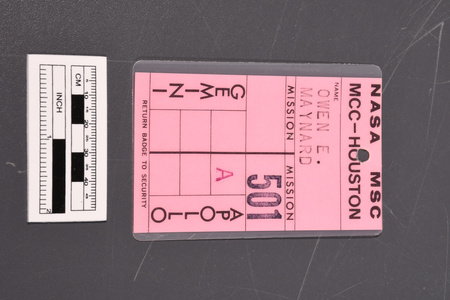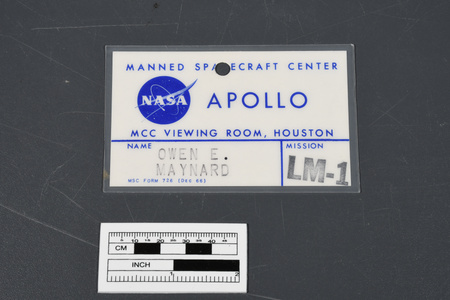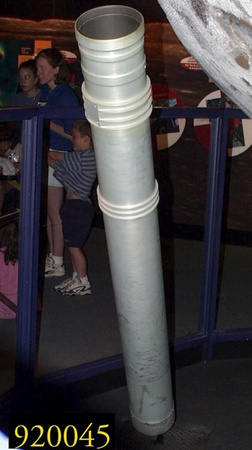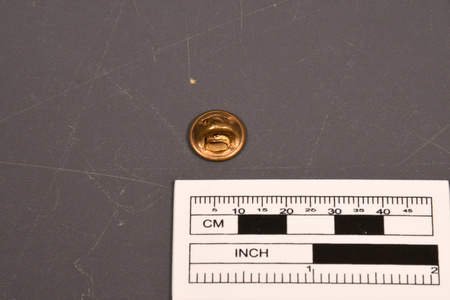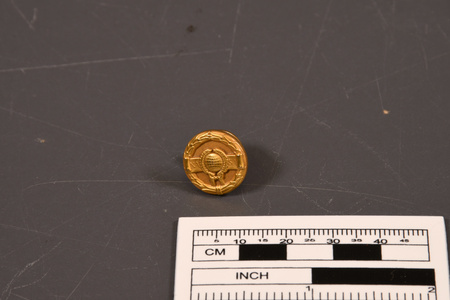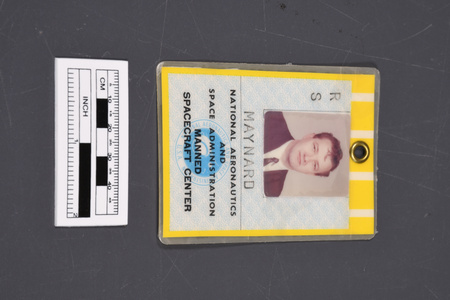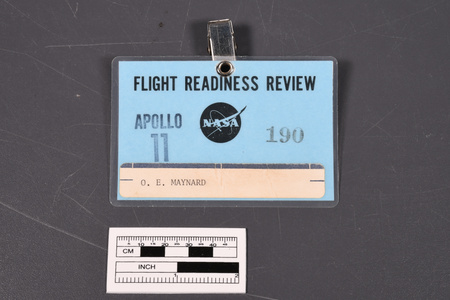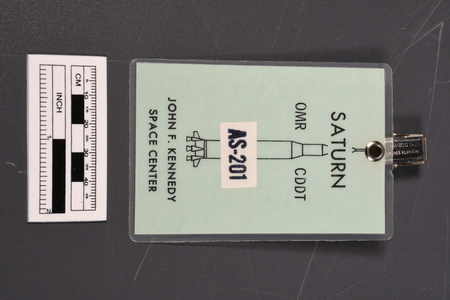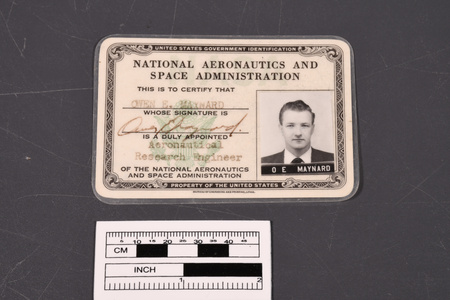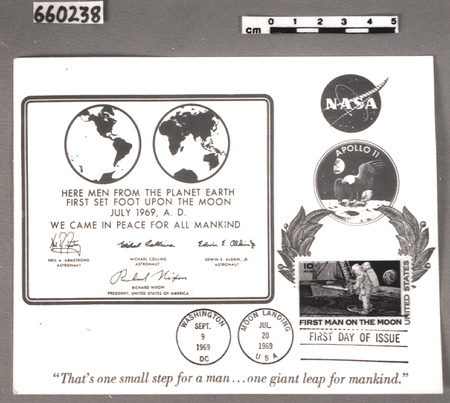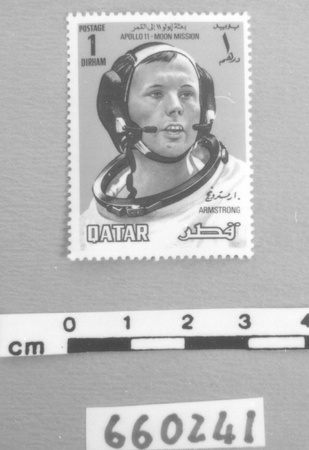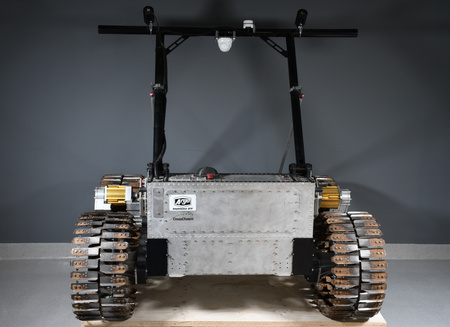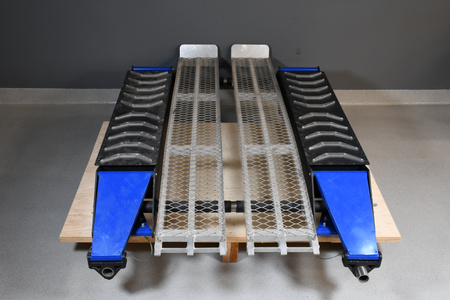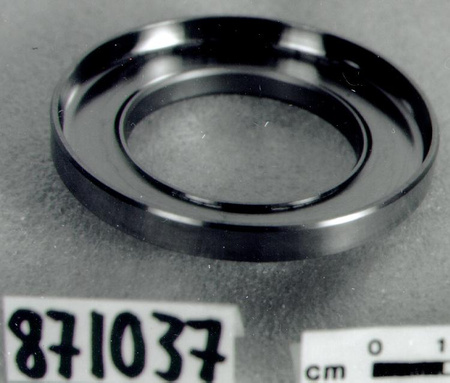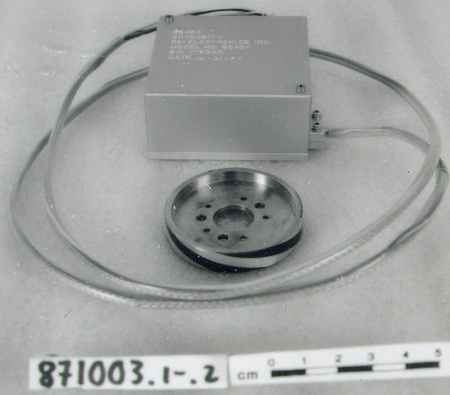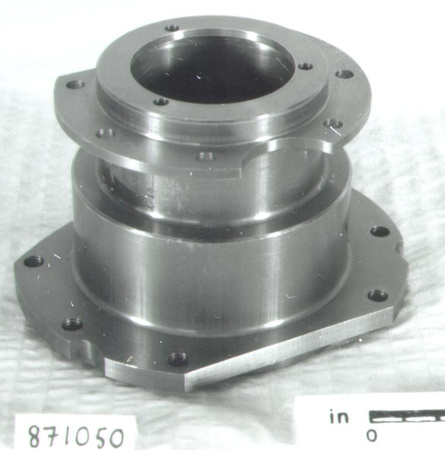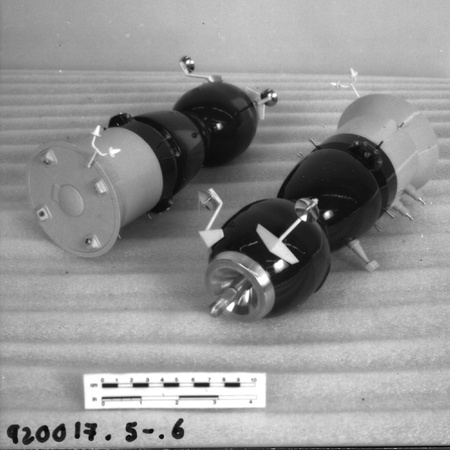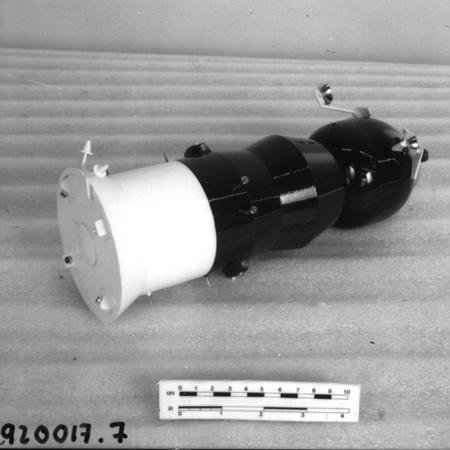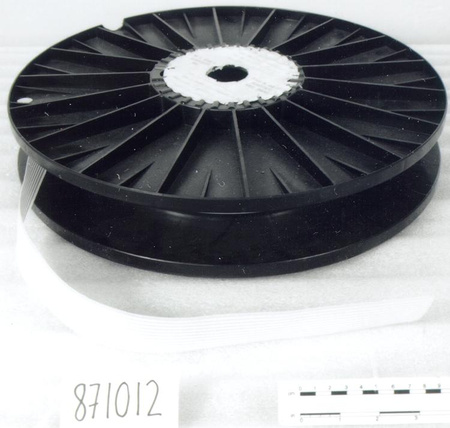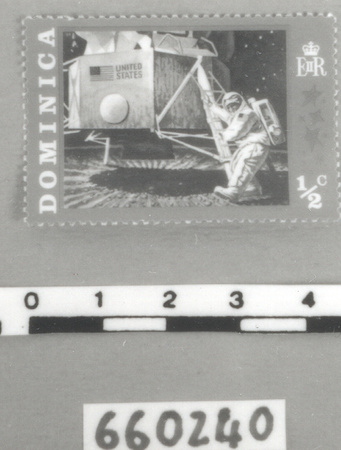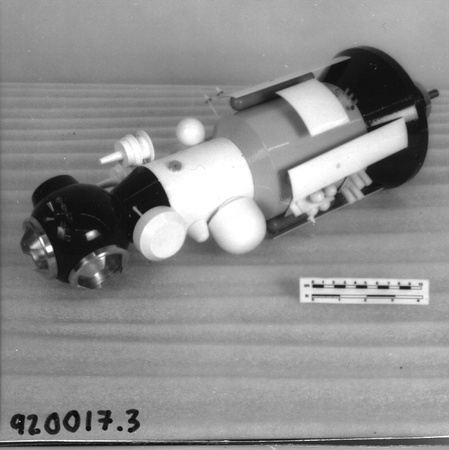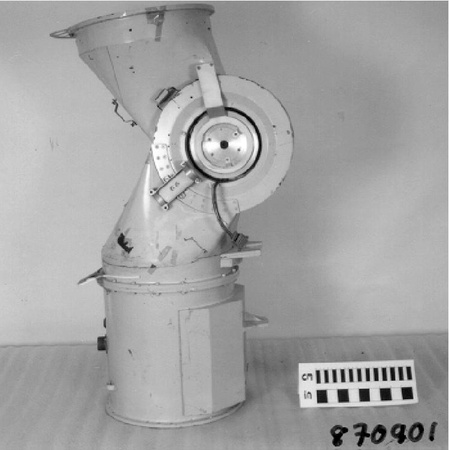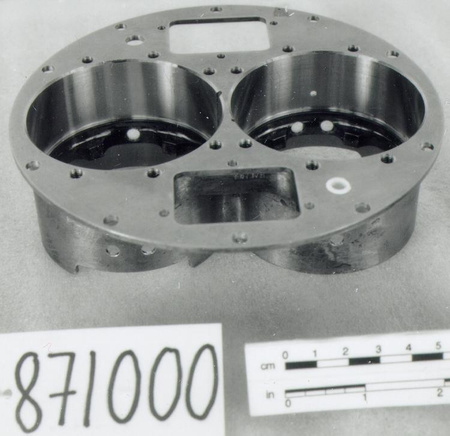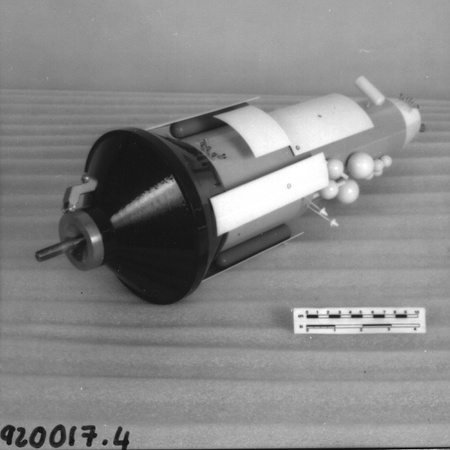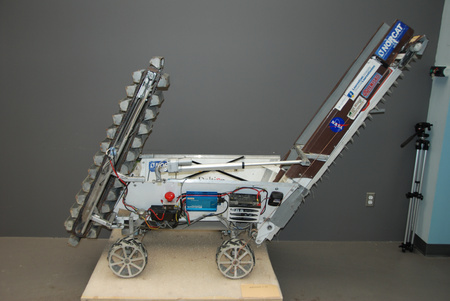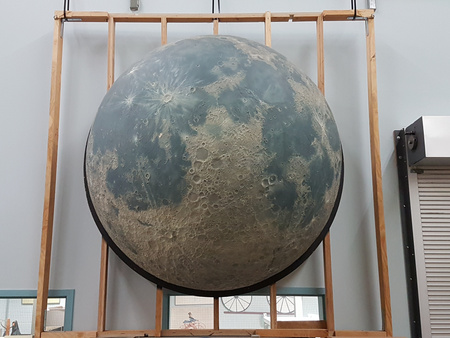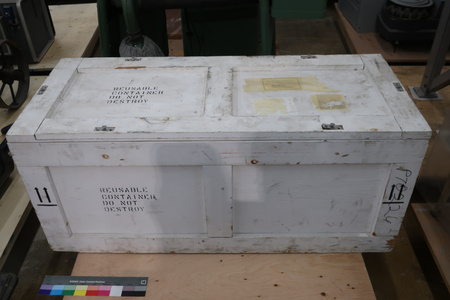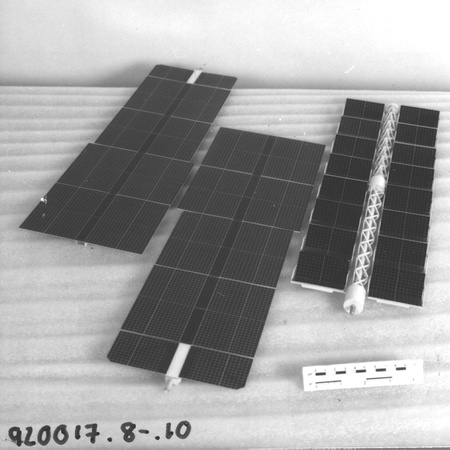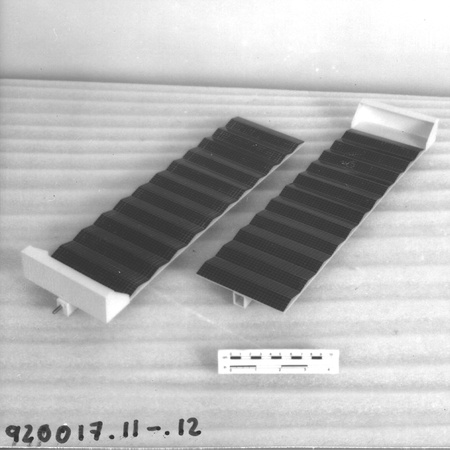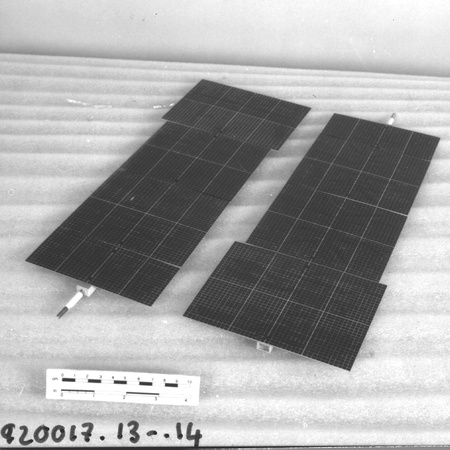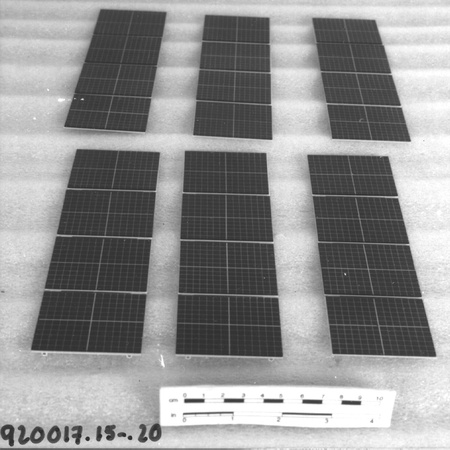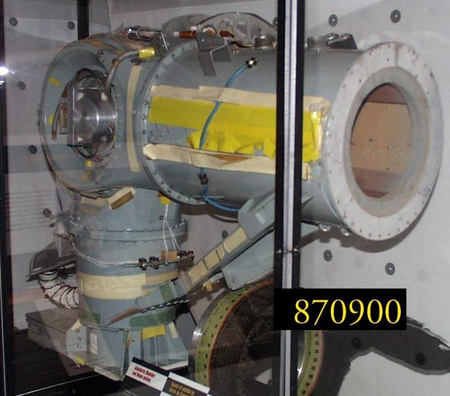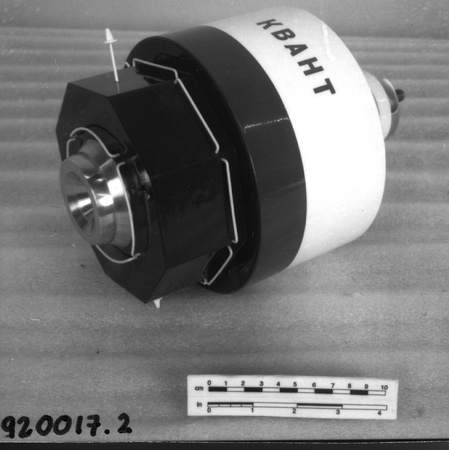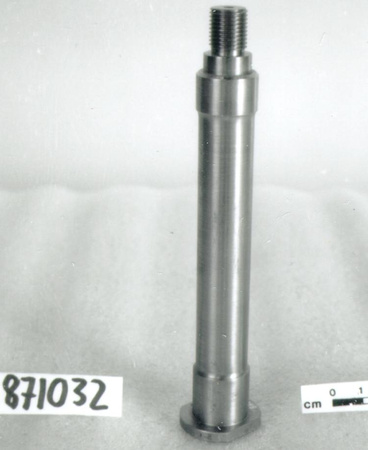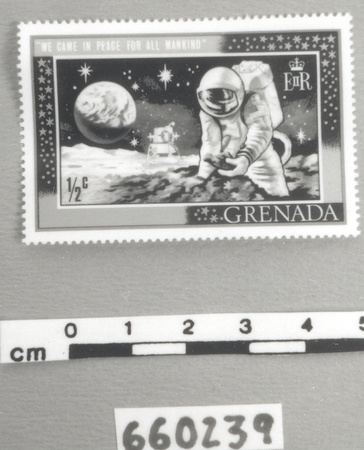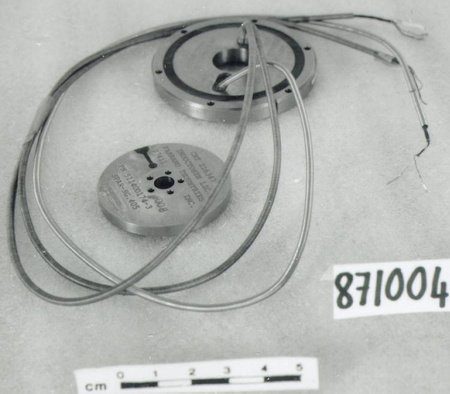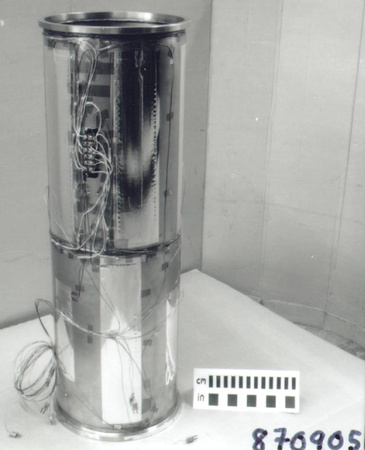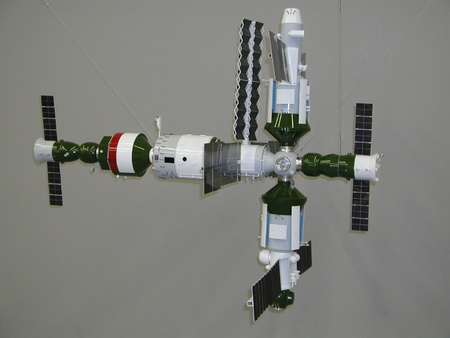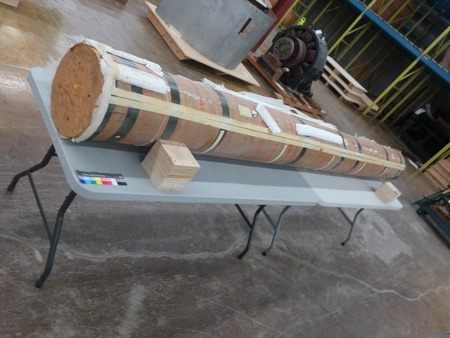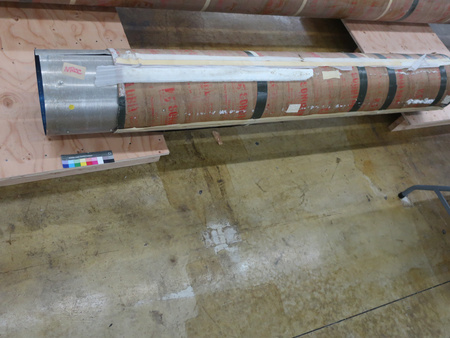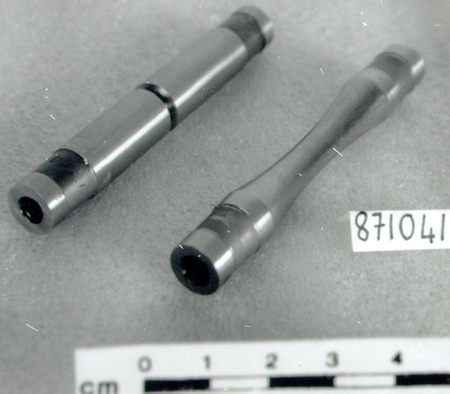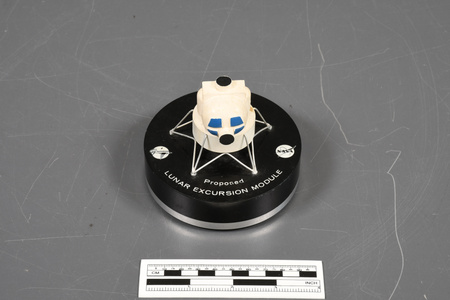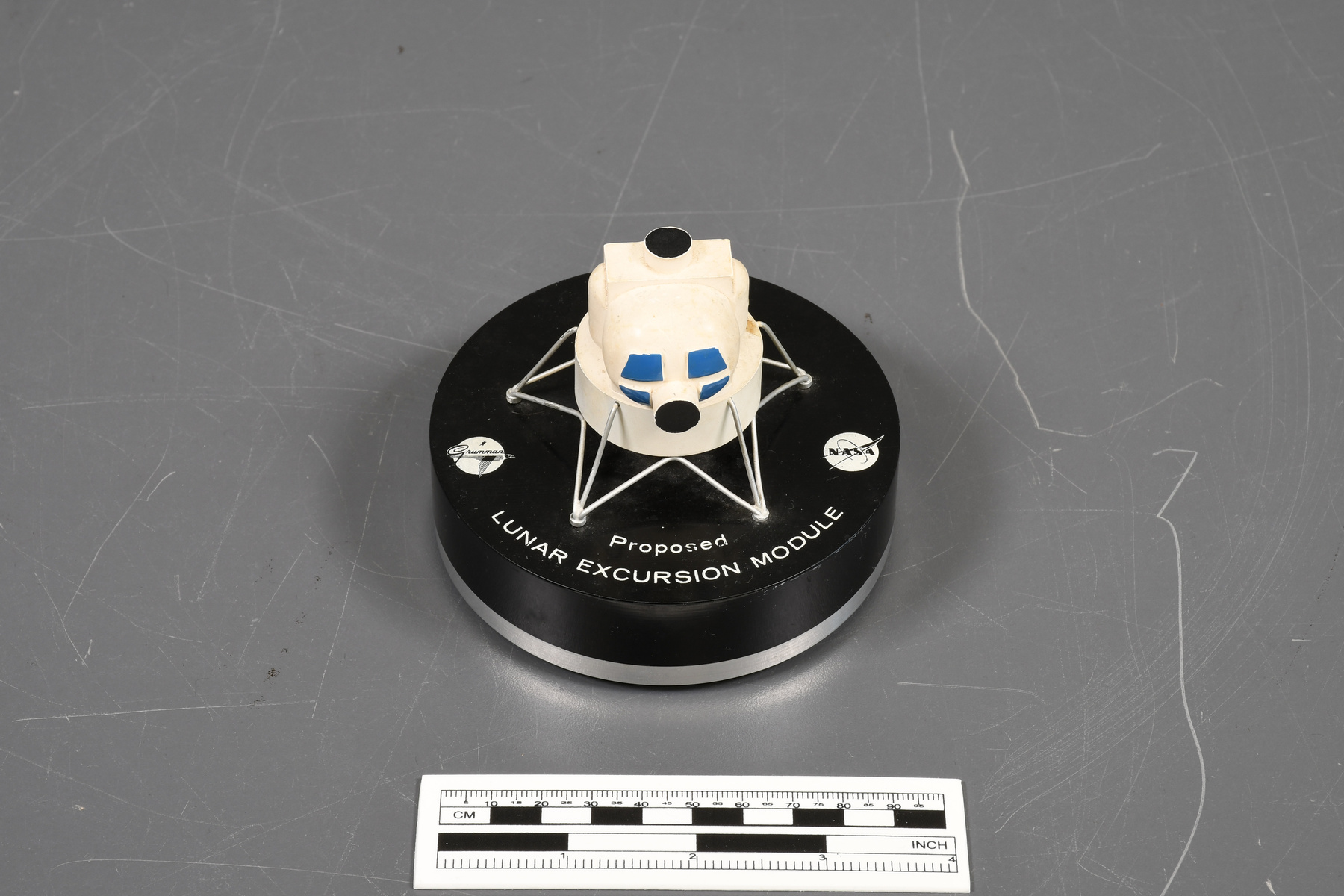Vehicle model
Use this image
Can I reuse this image without permission? Yes
Object images on the Ingenium Collection’s portal have the following Creative Commons license:
Copyright Ingenium / CC BY-NC-ND (Attribution-NonCommercial 4.0 International (CC BY-NC 4.0)
ATTRIBUTE THIS IMAGE
Ingenium,
2023.0001.001
Permalink:
Ingenium is releasing this image under the Creative Commons licensing framework, and encourages downloading and reuse for non-commercial purposes. Please acknowledge Ingenium and cite the artifact number.
DOWNLOAD IMAGEPURCHASE THIS IMAGE
This image is free for non-commercial use.
For commercial use, please consult our Reproduction Fees and contact us to purchase the image.
- OBJECT TYPE
- LUNAR LANDER
- DATE
- 1962
- ARTIFACT NUMBER
- 2023.0001.001
- MANUFACTURER
- Lester Associates Inc.
- MODEL
- Lunar Excursion Module
- LOCATION
- Thornwood, New York, United States of America
More Information
General Information
- Serial #
- N/A
- Part Number
- 1
- Total Parts
- 1
- AKA
- N/A
- Patents
- N/A
- General Description
- Synthetic (possible) model on a metal base with cork padding.
Dimensions
Note: These reflect the general size for storage and are not necessarily representative of the object's true dimensions.
- Length
- N/A
- Width
- N/A
- Height
- 7.9 cm
- Thickness
- N/A
- Weight
- N/A
- Diameter
- 9.8 cm
- Volume
- N/A
Lexicon
- Group
- Space Technology
- Category
- Models
- Sub-Category
- N/A
Manufacturer
- AKA
- LESTER
- Country
- United States of America
- State/Province
- New York
- City
- Thornwood
Context
- Country
- United States of America
- State/Province
- Texas
- Period
- ca. 1962-1970
- Canada
-
As part of the Apollo Program’s mission of landing a man on the Moon and returning him safely to Earth, NASA requested proposals for a Lunar Excursion Module (LEM) in July 1962 from eleven U.S. aerospace companies. Out of the nine proposals submitted, Grumman Aircraft Engineering Cooperation won the contract in November 1962, signing it in January 1963. This small contractor’s model depicts an early Grumman design, featuring five fixed landing legs, two docking hatches, four large helicopter-like windows, and no ladder. The round shape of the Module earned it the nickname of “The Bug.” This small LEM contractor’s model is quite rare and was given to executives at Grumman and NASA. It originally belonged to Canadian engineer Owen Maynard and illustrates his close association with the Apollo Program as Maynard was integral in the design and development of the Apollo spacecrafts, especially the LEM. Maynard was the first person at NASA to start working on the design of the LEM in 1961 and worked closely with Grumman as the manager of the LEM Systems Office. Maynard is also credited with naming the spacecraft the “Lunar Excursion Module,” alongside fellow engineer Laurence G. Williams. Maynard was insistent on the inclusion of the word “Excursion,” as they “[didn’t] want to give anyone the connotation that this thing’s going to go land on the Moon and do great wonderful things on the Moon. It’s only going to get down there and it’s going to land if it can land, and if it can’t, it’s going to come home. Until we know we can land, we are looking at just an excursion.” Maynard’s “Lunar Excursion Module,” was eventually shortened to the “Lunar Module,” as NASA thought the word excursion sounded too frivolous for the seriousness of Apollo’s mission. - Function
-
To illustrate the appearance of a proposed Lunar Excursion Module as one of the spacecrafts of the Apollo Program. - Technical
-
The Lunar Excursion Module (LEM), eventually known as the Lunar Module (LM), was a series spacecraft designed to land a two-person crew on the Moon’s surface as part of the Apollo Program from 1969-1972. This 1962 LEM contractor’s model illustrates an early Grumman LEM design, which features five legs, two docking hatches and four large helicopter-like windows. The five legs were first chosen for stability when landing on the Moon’s unknown terrain, but Grumman switched to four legs in 1963, as a way of simplifying the design and saving on weight. Other weight saving measures included shrinking the windows and removing the astronauts’ seats. It was Maynard’s idea to remove the seats. Contractor models, such as this one, served as a communication tool and as promotional material, as they were used to quickly illustrate complex design ideas for wide audiences, and were given out to executives at Grumman and NASA. - Area Notes
-
Unknown
Details
- Markings
- On the base: "[logo]Grumman"/ "[logo] NASA"/ "Proposed/ LUNAR EXCURSION MODULE"/ On the label on the proper bottom: "LESTER ASSOCIATES, INC./ Thornwood, N.Y."
- Missing
- Possible unknown missing parts due to holes in sides and proper back.
- Finish
- Predominantly black base with a silver-coloured band in the lower quarter, a brown cork bottom with a black and gold label, and grey markings on the top. Secured to the base is an off-white model with blue painted windows and black painted parts on the proper front and top.
- Decoration
- N/A
CITE THIS OBJECT
If you choose to share our information about this collection object, please cite:
Lester Associates Inc., Vehicle model, circa 1962, Artifact no. 2023.0001, Ingenium – Canada’s Museums of Science and Innovation, http://collection.ingenium.ca/en/id/2023.0001.001/
FEEDBACK
Submit a question or comment about this artifact.
More Like This

